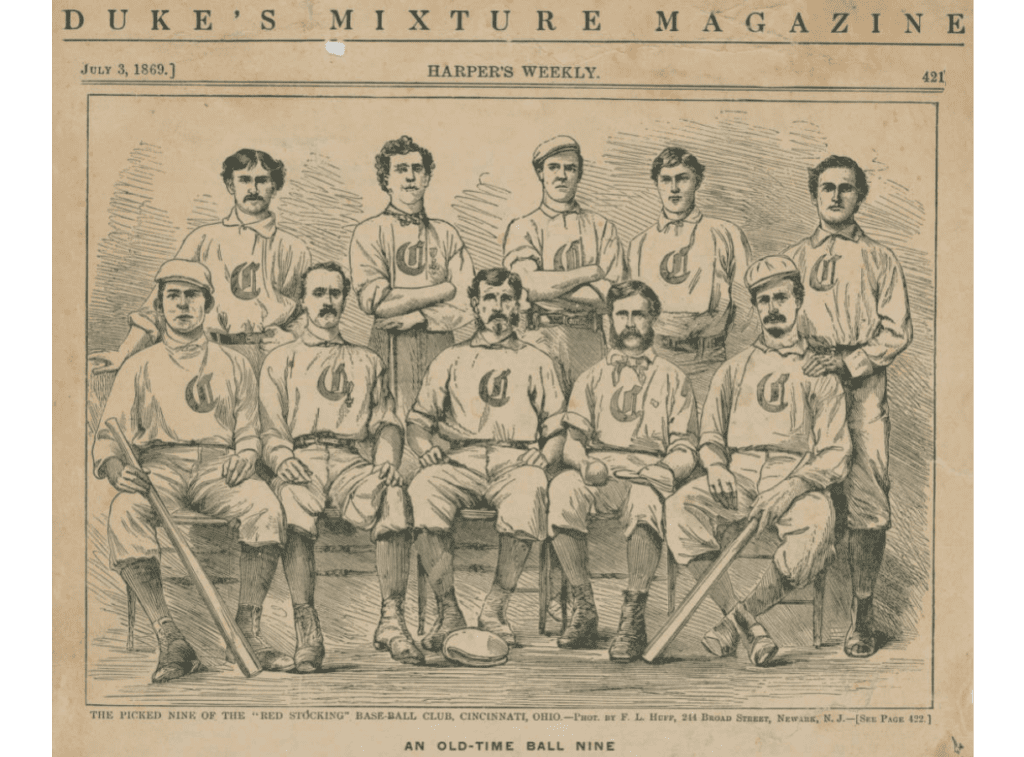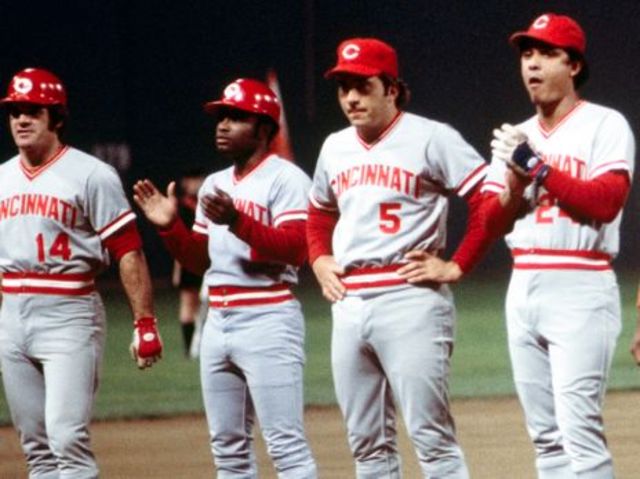Cincinnati is conservative by nature, forever known for frowning on flamboyancy, but the town abandons all instinct against ostentatiousness when it comes to its baseball franchise. The Reds have always given reason to go gaga in the Queen City.
Last month, traditional Opening Day festivities – launched with the 100th anniversary of the Findlay Market Opening Day parade in downtown – once again put Cincinnati’s long love affair with its major league baseball club on full display.
The celebration will continue throughout this season as the Reds mark their 150th anniversary as baseball’s first professional team with special events, bobblehead giveaways and 15 different uniforms commemorating the 1869 Red Stockings.

Those 1869 Red Stockings not only were the first club to pay all its players, they also brought national attention to Cincinnati and the state of Ohio – as well as the burgeoning sport itself – by going 57-0 that season. They went on to win an unprecedented 81 consecutive games, ushering in widespread acceptance for giving salaries to players.
The Reds provided civic pride in countless ways and moments through the next 150 years, never more so than when the Big Red Machine rolled in the 1970s. Those fabled clubs were powered by a collection of Hall of Famers in Johnny Bench, Joe Morgan and Tony Perez, as well as hometown hero Pete Rose, baseball’s all-time hits leader.
Bench. Morgan. Perez. Rose. Those are some of the biggest names in baseball history, and they earned their immortality by winning World Series championships in ’75 and ’76 – teams considered by many to be among the greatest ever. Cincinnati dominated the decade with four National League pennants and six NL West Division titles from 1970 through ‘79.

The Reds also won World Series titles in 1919, ’40 and ’90, and boast a rich pedigree of managers and players such as Hall of Famers in Frank Robinson, Barry Larkin and Sparky Anderson.
Cincinnati fans take great pride in the team’s numerous historical firsts that have shaped baseball’s evolution since the groundbreaking all-professional 1869 Red Stockings. Among those moments:
Such historic moments have kept the Reds close to their fans’ hearts even as the team’s success on the field has ebbed and flowed over the years. History been the cornerstone of the special bond Cincinnatians have with their ballclub. The symbiotic rapport dates to the 19th century when the city was known as the nation’s pig-butchering capital and team considered the idea of changing its name from Red Stockings to the Porkopolitans.
August “Garry” Herrmann, president of the Reds from 1902 to ’27, used to visit local church and city festivals in his hometown of Cincinnati, shaking hands like a politician, fostering a relationship between team and fans.

After Powel Crosley bought the Reds during the Great Depression, he founded a local youth baseball organization known as the Knothole Club that fertilized the Reds’ fans base for generations. Older fans today still fondly recall going to Crosley Field or Riverfront Stadium as children for “Kid Glove Day.”
Even those legendary Big Red Machine teams in the 1970s had an endearing appeal that made them seem human, part of the community, and a good fit for Cincinnati’s small-town nature. Johnny Bench might be the greatest catcher ever, but he was also willing to actually milk a cow on the Riverfront field before a game on “Farmer’s Night.”

Last month, Bench caught the ceremonial first pitch on Opening Day as the Reds began the season with a 5-3 victory over the Pittsburgh Pirates. He caught the ball from Eric Davis, star of the team’s 1990 world champions. Morgan served as the honorary captain.
Before the game, thousands of fans lined the downtown streets of the Queen City for the traditional Opening Day parade.
The Reds don’t just play for Cincinnati; They are part of the city.
It has been that way since they first paid their players in 1869.
Todd Jones was a sportswriter for The Columbus Dispatch for 20 years and for the Cincinnati Post for 10 years. He’s currently the senior writer for the Ohio State Alumni Magazine.